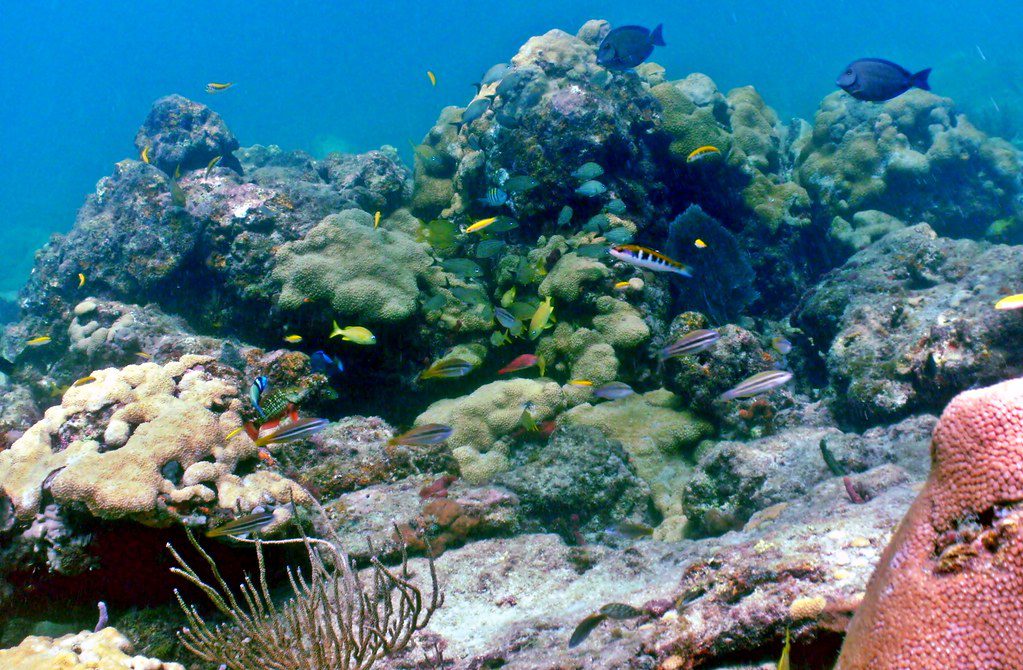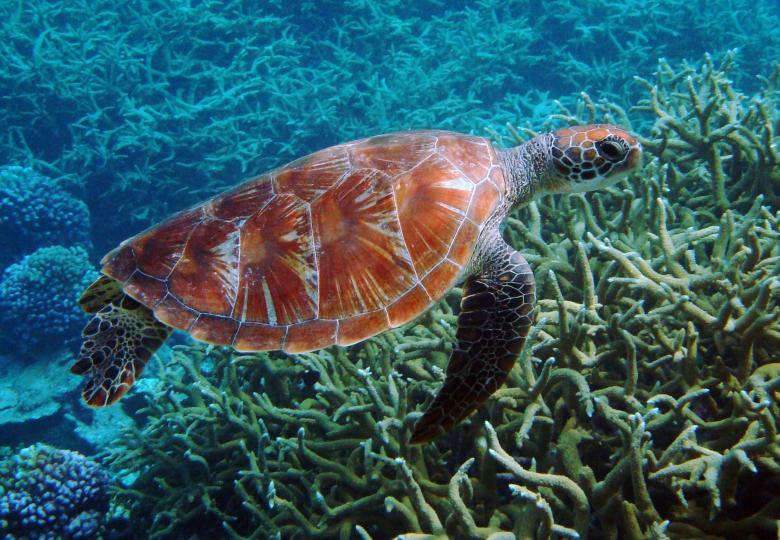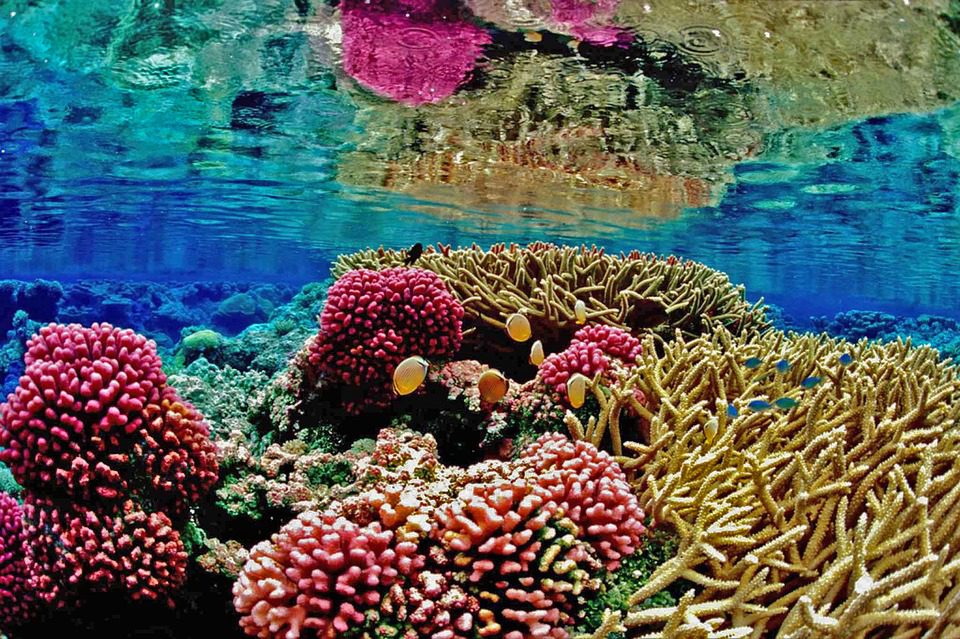The coral reef lies a few miles seaward of the Florida Keys, is about 4 miles (6 to 7 km) wide and extends (along the 20 meter depth contour) 270 km (170 mi) from Fowey Rocks just east of Soldier Key to just south of the Marquesas Keys. There are more than 6,000 individual reefs in the system.

Florida’s Coral Reef came into existence 10,000 years ago when sea levels rose following the last Ice Age. Reef growth is relatively slow; individual colonies grow only one-half inch to seven inches a year, depending on the species. Coral reefs are in a constant state of flux, where new polyps (the living tissue) grow on the outer surface while their skeleton erodes to help make the white sand for our beaches. During long periods of favorable conditions, the reefs may reach awe-inspiring heights and diversity.
Corals are animals that have a symbiotic relationship with microscopic algae. The corals benefit from the nutrients and oxygen that the symbionts provide through photosynthesis, and the symbionts receive nutrients and protection from the corals. The symbionts also give the corals their beautiful spectrum of colors.

Coral reef development occurs only in areas with specific environmental characteristics: a solid structure for attachment, relatively high water temperatures, clear waters low in phosphate and nitrogen nutrients, and moderate wave action to disperse waste and bring oxygen and plankton to the reef. Most of Florida’s sport fish species and many other marine animals spend significant parts (particularly during their younger development stages) of their lives on or around Florida’s Coral Reef and associated ecosystems.
According to en.wikipedia; fla-keys.com. Source of photo: internet








